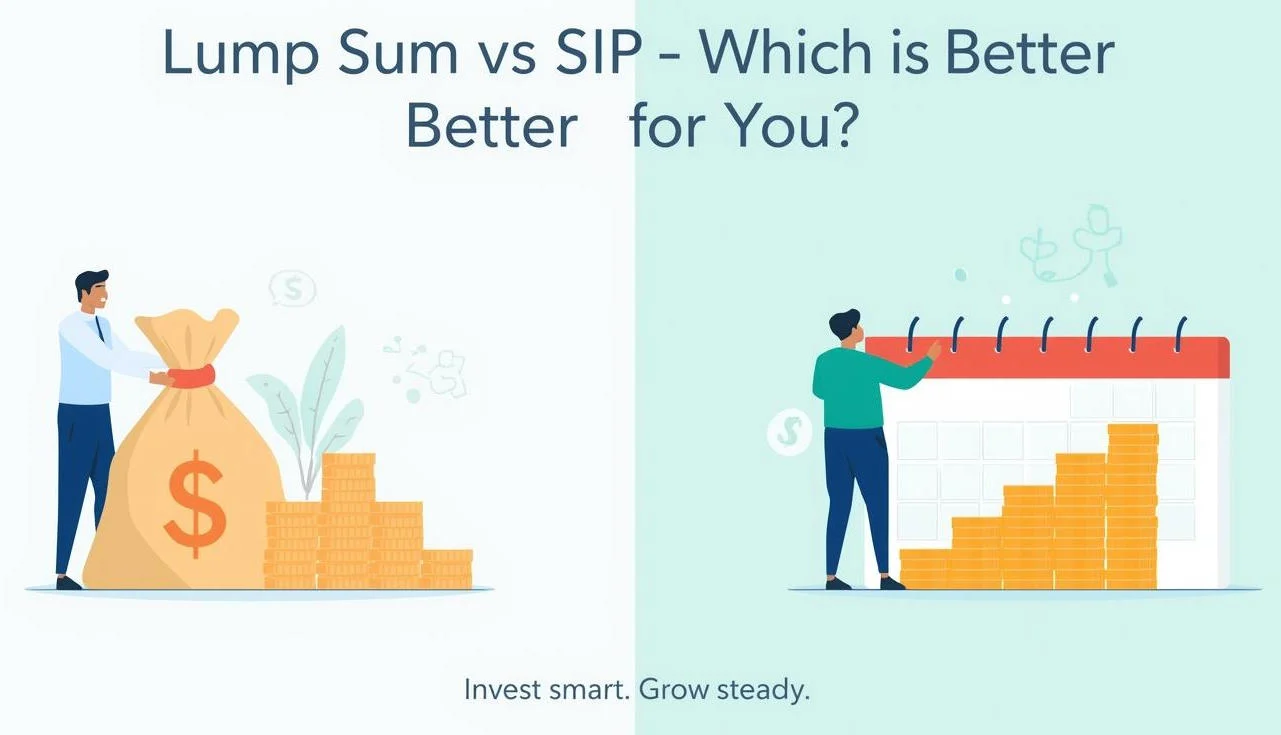Lump Sum vs SIP: Which is Better for You?
When it comes to investing in mutual funds, one of the most common questions investors face is:
Should I invest a lump sum amount or go for a Systematic Investment Plan (SIP)?
Both options can help you build wealth over time, but they work very differently — and which one suits you better depends on your financial situation, market conditions, and goals.
What is a Lump Sum Investment?
A lump sum investment means investing a large amount of money in one go — say ₹5 lakh — into a mutual fund.
It’s ideal when you have a significant amount of idle cash, such as a bonus, maturity proceeds from an FD, or a sale of property.
Advantages of Lump Sum
- Immediate market exposure: Your entire money starts working for you from day one.
- Potential for higher returns in rising markets: If markets perform well after you invest, you benefit from the full upside.
- Simple and one-time effort: No need to track monthly payments or schedules.
Disadvantages of Lump Sum
- Market timing risk: If markets correct soon after your investment, your portfolio value can dip sharply.
- Emotional stress: Watching a large amount fluctuate can be unsettling for many investors.
- Not ideal for beginners: Requires some experience or confidence in market entry timing.
What is a SIP (Systematic Investment Plan)?
A SIP allows you to invest a fixed amount every month (say ₹5,000) into a mutual fund.
It brings discipline and consistency to investing, making it ideal for salaried individuals or anyone seeking gradual wealth creation.
Advantages of SIP
- Rupee Cost Averaging: You buy more units when prices are low and fewer when prices are high — reducing the impact of market volatility.
- Financial discipline: Encourages regular saving and investing habits.
- Ideal for long-term goals: Great for goals like retirement, education, or wealth creation over 10–20 years.
- Less stress: You don’t need to worry about market timing.
Disadvantages of SIP
- Slower deployment: Your money gets invested over time, so in a strong bull market, returns might be slightly lower than lump sum.
- Requires consistency: Skipping SIPs or stopping midway reduces the compounding benefit.
Lump Sum vs SIP: A Quick Comparison
| Factor | Lump Sum | SIP |
|---|---|---|
| Investment Type | One-time large amount | Regular small investments |
| Best For | Investors with surplus funds | Regular earners |
| Market Condition | Favorable in rising markets | Safer in volatile or uncertain markets |
| Risk | High if market falls post-investment | Lower due to averaging |
| Emotional Comfort | Can be stressful | Peace of mind with automation |
| Returns Potential | Higher in bull markets | Steady over long term |
Which is Better for You?
- If you have a large sum available and are comfortable with market risks, a lump sum investment can work well — especially when markets are undervalued.
- If you prefer a disciplined, low-stress approach and want to invest from your monthly income, SIP is the better choice.
In fact, many smart investors use a combination of both:
Invest a part of your lump sum immediately, and put the rest into a Systematic Transfer Plan (STP) to move funds gradually into equity over time.
The Bottom Line
There’s no universal winner in the “Lump Sum vs SIP” debate — the best choice depends on your financial goals, risk appetite, and cash flow.
The key is to start investing early, stay consistent, and let time and compounding do their magic.
💡 Tip:
Whether you invest ₹5,000 a month or ₹5 lakh in one go, the most important step is — to start now.

One response to “Lump Sum vs SIP: Which Is Better for You?”
[…] SIP you start today is a small seed for your financial forest tomorrow.Let it grow — and let time do […]